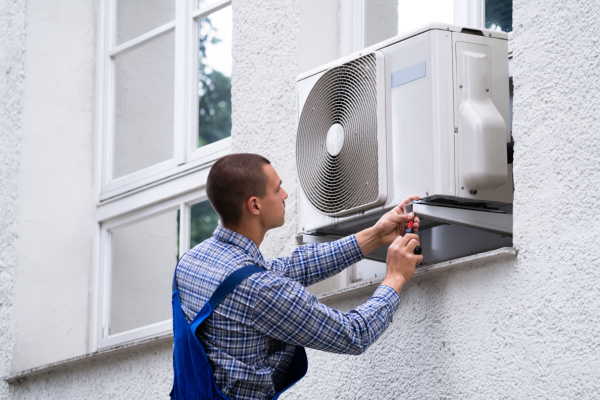Window air conditioners and portable air purifiers will need to get more efficient to comply with new federal standards in the US. The new rules are expected to cut consumer electricity bills by $1.5 billion a year, according to the Department of Energy (DOE), which finalized the standards in March.
As The Verge reports, on top of saving consumers’ money, making air conditioners more energy-efficient can help take pressure off power grids during heatwaves and cut down on the greenhouse gas pollution causing climate change. This is also the first time the DOE has issued federal efficiency standards for portable air purifiers, which became a more common household fixture as a result of the covid-19 pandemic and worsening wildfires in the American West.
“These standards will help families afford to keep their homes safe with comfortable temperatures and cleaner air, while curbing planet-warming emissions from power plants,” Andrew deLaski, executive director of the Appliance Standards Awareness Project (ASAP), said in a statement. “These are commonsense steps that will ensure consumers don’t get stuck with outdated, energy-wasting technology.”
You can tell how efficient a window AC unit is by its CEER rating, or combined energy efficiency ratio. That’s a ratio of cooling capacity, measured in British thermal units per hour (Btu/h), to the power input in watts (W). Currently, 11.0 is the minimum CEER rating for a typical window AC unit with a cooling capacity of less than 8,000Btu/h. Under the new standards, the minimum CEER increases to at least 12.8 for smaller units (the exact number depends on the type of unit and its cooling capacity).
For larger units with a cooling capacity greater than 8,000Btu/h, the new standard effectively pushes manufacturers to switch to variable-speed compressors. That switch gets rid of on-and-off cycling, makes room temperatures more consistent, and typically makes the AC units quieter to run, according to the Appliance Standards Awareness Project. Starting in 2026, the new rules will apply to new window air conditioners manufactured or imported into the US.
The US has raised federal efficiency standards for room air conditioners three times since 1990, and a typical window AC unit now uses 39 percent less energy as a result. This latest update is overdue; the DOE was supposed to revise it in 2019 but is working through a backlog of Congressionally mandated energy efficiency updates.
Complying with those standards is expected to cost manufacturers around $82.1 million, The Hill reports. After the DOE proposed the rules last year, the Association of Home Appliance Manufacturers submitted a comment saying many of the standards for room air conditioners were “too stringent” and would have “a negative, disproportionate impact on low-income households.”
But the trade group has supported a national energy conservation standard for room air purifiers. Without a national standard, manufacturers struggled with regulations differing from state to state, it said in a December statement.
Without a federal efficiency standard for portable air purifiers, devices on the market vary wildly from one another. The most inefficient air purifiers might use three to eight times more energy than their energy-efficient counterparts. Five states have set their own standards, and the DOE is mostly following their lead with its own. The new federal standards will go into effect in 2024 and are expected to result in 27 percent energy savings, according to the DOE.
All in all, the DOE expects its new rules for window air conditioners and air purifiers to reduce carbon dioxide emissions by 106 million metric tons over three decades. That avoids about as much climate pollution annually as roughly 13.4 million homes in a year.
Ironically, those cooling AC units (as long as they’re hooked up to power grids running on dirty energy) are adding to the pollution that’s warming up the planet and making heat spells more extreme. And during heatwaves, people collectively blasting their air conditioning can put tremendous pressure on the grid, which can lead to blackouts. Making more energy-efficient appliances is a simple way to address all of these challenges.
Solving those problems saves consumers some cash, too. According to the DOE, window air conditioners and air purifiers adhering to the new efficiency standards will save each household around $150 over the average life of the appliances. Cumulatively over 30 years, it adds up to more than $25 billion in savings, the DOE says.
—
Photo Credit: Andrey_Popov / Shutterstock.com
